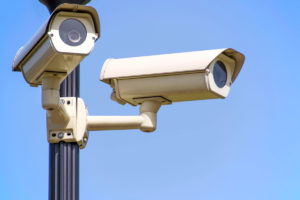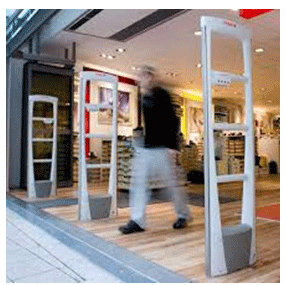 If you were asked what area of your store would present the most opportunity for employee theft and fraud, what would you answer? The checkout lanes where cashiers have access to the register, the ability to pass merchandise, or steal gift cards and credit cards? At the register cashiers also have access to electronic article surveillance (EAS) detachment tools and deactivation pads. It is easy enough for them to “unprotect” merchandise and walk it out of the store undetected. Perhaps the sales floor, where employees can take merchandise and conceal it in the boxes of other merchandise then return and purchase it later (box stuffing)? On the sales floor they have the ability to conceal merchandise under clothing or wear clothing belonging to the store and walk out during a “break” without paying for it. Maybe the stockroom staff has the most opportunity to steal since they generally have little direct supervision and have plenty of hiding spaces to conceal empty packages if they take something not protected with EAS tags or devices. One area that could be overlooked and can be a source of a significant amount of undetected theft and fraud is the return desk.
If you were asked what area of your store would present the most opportunity for employee theft and fraud, what would you answer? The checkout lanes where cashiers have access to the register, the ability to pass merchandise, or steal gift cards and credit cards? At the register cashiers also have access to electronic article surveillance (EAS) detachment tools and deactivation pads. It is easy enough for them to “unprotect” merchandise and walk it out of the store undetected. Perhaps the sales floor, where employees can take merchandise and conceal it in the boxes of other merchandise then return and purchase it later (box stuffing)? On the sales floor they have the ability to conceal merchandise under clothing or wear clothing belonging to the store and walk out during a “break” without paying for it. Maybe the stockroom staff has the most opportunity to steal since they generally have little direct supervision and have plenty of hiding spaces to conceal empty packages if they take something not protected with EAS tags or devices. One area that could be overlooked and can be a source of a significant amount of undetected theft and fraud is the return desk.
What can happen at the return desk that makes it a vulnerable point for employee theft? Cash theft, merchandise theft, return fraud, gift card fraud or any combination of these can take place here. When a customer returns merchandise with a receipt is the cashier giving the original receipt back to the customer along with the new receipt? What do you do with items that have been returned? Is there a central location for keeping returns until they can be processed? Is there a procedure in place for getting returned merchandise protected with electronic article surveillance tags and anti-theft devices shortly after the return takes place? If you haven’t thought about the ramifications of not having adequate procedures in place, then this list will provide you with some reasons evaluate your processes and options for improving controls:
- If a return is done, the item returned should be circled on the original receipt and the slip for the completed return attached and handed back to the customer. Return desk employees who keep receipts may be fraudulently refunding other items from the receipt that were not really returned. They then remove that amount of cash from the register and keep it.
- Do you audit the merchandise at the return desk? You should be able to review each item and verify it was returned and when. You could find that a dishonest employee is stealing returned merchandise that was not damaged. If there is no auditing, there is little chance the employee will be caught engaging in theft.
- If a piece of merchandise is returned and the same item is protected with an anti-theft device on the sales floor, is that merchandise being processed and secured right away? Failing to immediately secure merchandise with EAS protection could be an indicator an employee intends to steal it.
- Is the service desk area neat, organized and set up so everything has a place? Or is the return area cluttered and unorganized with random merchandise laying all over the counters, in storage bins and on the floor? If so, there is greater opportunity for employees to hide merchandise they would like to steal. If there is no organization it becomes very difficult to determine what should be behind the desk and what shouldn’t be.
- Do you monitor for excessive line voids from your cashiers, including the return desk associate? Employees who void multiple items during sales transactions may be passing merchandise to friends or family members.
- Inspect boxed and packaged merchandise returns. Open the package to be sure the proper merchandise is inside. Some thieves will put in the wrong item to defraud the store. Also look at shrink wrapped merchandise being returned. There are criminals that will take the time to change out the merchandise in the box for a rock or item with a similar weight and then shrink wrap the package. It looks like it was not opened, but often a close inspection will reveal an edge or a corner that does not appear to be manufacturer issued…open it up!
- Are return desk employees assigned their own register till? Multiple cashiers working on a register makes it difficult to identify the source of a cash shortage.
The return desk can be a tricky area to control and can be the location where shortage, theft and fraud can run rampant. Take the time to review your procedures and be sure you are doing all you can to deter criminal activity.

 drawer. IF someone reaches towards the drawer the register should be shut. Registers should be closed immediately following a transaction. If a cashier is sorting through the money or “straightening” they could be slipping money out and pocketing it or dropping money, then putting it in their pocket. Don’t “exchange” bills for patrons, there are some shoplifters who also engage in short changing and confusing cashiers and steal money using this method. Others will argue they did not get the right amount of change and start reaching in the till. If there is a dispute over change a manager needs to conduct a till audit with a partner, in the cash office. If there are enough registers in the store, limit one cashier to one register, when the cashier is done for the day, their money goes in their bag with a supervisor present and the supervisor drops it in the cash cart and rolls it to the cash office. Keep large bills under the till, if they are on top they are easy to see and easier for a grab and run. Consider purchasing locking till covers for registers that have money in them but are not currently in use. There are traveling shoplifting rings and till tap rings that have register keys and will open drawers if no one is paying attention. Till covers prevent someone from getting to the cash even if they open the drawer. Finally, when a register has too many large bills or excessive amounts of money, do a skim and take the excess to the cash office.
drawer. IF someone reaches towards the drawer the register should be shut. Registers should be closed immediately following a transaction. If a cashier is sorting through the money or “straightening” they could be slipping money out and pocketing it or dropping money, then putting it in their pocket. Don’t “exchange” bills for patrons, there are some shoplifters who also engage in short changing and confusing cashiers and steal money using this method. Others will argue they did not get the right amount of change and start reaching in the till. If there is a dispute over change a manager needs to conduct a till audit with a partner, in the cash office. If there are enough registers in the store, limit one cashier to one register, when the cashier is done for the day, their money goes in their bag with a supervisor present and the supervisor drops it in the cash cart and rolls it to the cash office. Keep large bills under the till, if they are on top they are easy to see and easier for a grab and run. Consider purchasing locking till covers for registers that have money in them but are not currently in use. There are traveling shoplifting rings and till tap rings that have register keys and will open drawers if no one is paying attention. Till covers prevent someone from getting to the cash even if they open the drawer. Finally, when a register has too many large bills or excessive amounts of money, do a skim and take the excess to the cash office.

 The busiest shopping season of the year is almost done.
The busiest shopping season of the year is almost done. Light-When someone is looking to do no good to your property, they feel more secure if it looks like no one is home. The key is to confuse them and make them feel unsure. Remember, most burglars are lazy. If they are not sure about your house, they will move on. So you should have at least two light timers (three is better) set up and running seven days a week. These should be in different areas of the home and should come on and off at different times. Use the random or security feature found on most timers. This will vary the on/off time every day just a little in case someone is watching the house for a pattern.
Light-When someone is looking to do no good to your property, they feel more secure if it looks like no one is home. The key is to confuse them and make them feel unsure. Remember, most burglars are lazy. If they are not sure about your house, they will move on. So you should have at least two light timers (three is better) set up and running seven days a week. These should be in different areas of the home and should come on and off at different times. Use the random or security feature found on most timers. This will vary the on/off time every day just a little in case someone is watching the house for a pattern. 